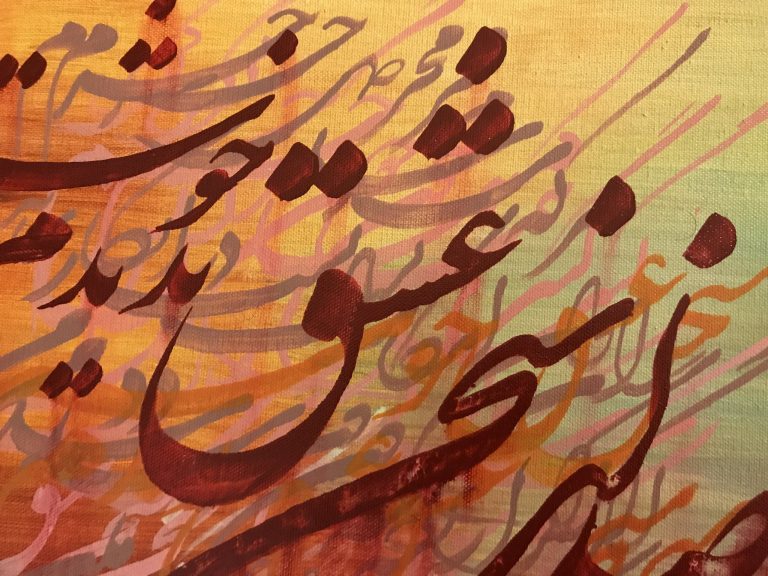This is the fourth video of Persian Alphabet and the last one, of learning Persian Alphabet. These videos cover all 32 Persian letters and all the sounds that are not categorized as letters, namely -َ/ -ُ/-ِ. These sounds are /a/, /o/, and /e/ in sequence. If you watch all these videos carefully, at the end you will be able to read Persian texts. So, make sure you watch all videos, make notes of all Persian letters and sounds, and try to check what you have learned by circling around the letters in any Persian text that you can have access to.
Persian Alphabet: Video one
In video one, we have learned how to read and write:
الف (a sound), ب (b sound), ن (n sound), د (d sound), ر (r sound), م (m sound), س (s sound) and also the short vowel اَ which has the a sound as in a in cat in English.
Persian Alphabet: Video two
In the second video, we have covered these letters and sounds:
پ (p sound), ت (t sound), ز (z sound), ش (sh sound as in the beginning of the English word SHE), و (v sound), ه (h sound) and ی ( y sound as in the beginning of the word YES in English).
Persian Alphabet: Video three
Video three was for these letters:
ف (f sound),
ح (h sound, this is only different in writing otherwise the sound is exactly the same as ه sound that we have learned in the second video),
خ (kh sound, in IPA the symbol is x. You might have a problem producing x sound at the beginning, but don’t worry, I teach you how to make it),
چ (ch sound as in the beginning and the end of the English word CHURCH),
and ج (j sound, as in the beginning and end of the English word JUDGE).
We also learn how to write گ (g sound), ل (L sound), ژ (zh sound as in the sound that you can find with -SI in the English word Television).
Here and now
In this video, which is the last one of the series, you will learn:
ص (which again has the s sound as in س),
ض (again with the z sound az in ز),
ط ( with t sound as what we have in ت),
ظ ( again z sound as in ض and ز),
ث (s sound as in ص, and س),
ع ( which the sound is called glottal stop)
غ (with gh sound as what we already had for the letter ق).
There is still another /z/ sound and that’s ذ.
So as you see there are four symbols for /z/ sound, three symbols for /s/ sound, two for /t/ sound, and two for /q/ sound. It might sound scary, but it only has a historical reason. Some of the words entered Persian from Arabic. So, we use the same orthography to refer to them, but we don’t pronounce them as they do. Some others are remnants of Old Persian. In Old Persian, for example, we have the interdental /s/ sound, as you can see at the beginning of the English words Think, Thank, etc. However, today there is no such sound. As you might know, writing systems resist changes and, compared to the speaking form of a language, they hardly change.
At the end of this video, you will read part of a Persian translation of the famous book Little Princess.
I hope this would be only the beginning of your journey to learn Persian. Learning a new language is not only fun but gives you a perspective to a new world. Let’s learn Persian language and enjoy a new horizon of life.
Good luck with that
